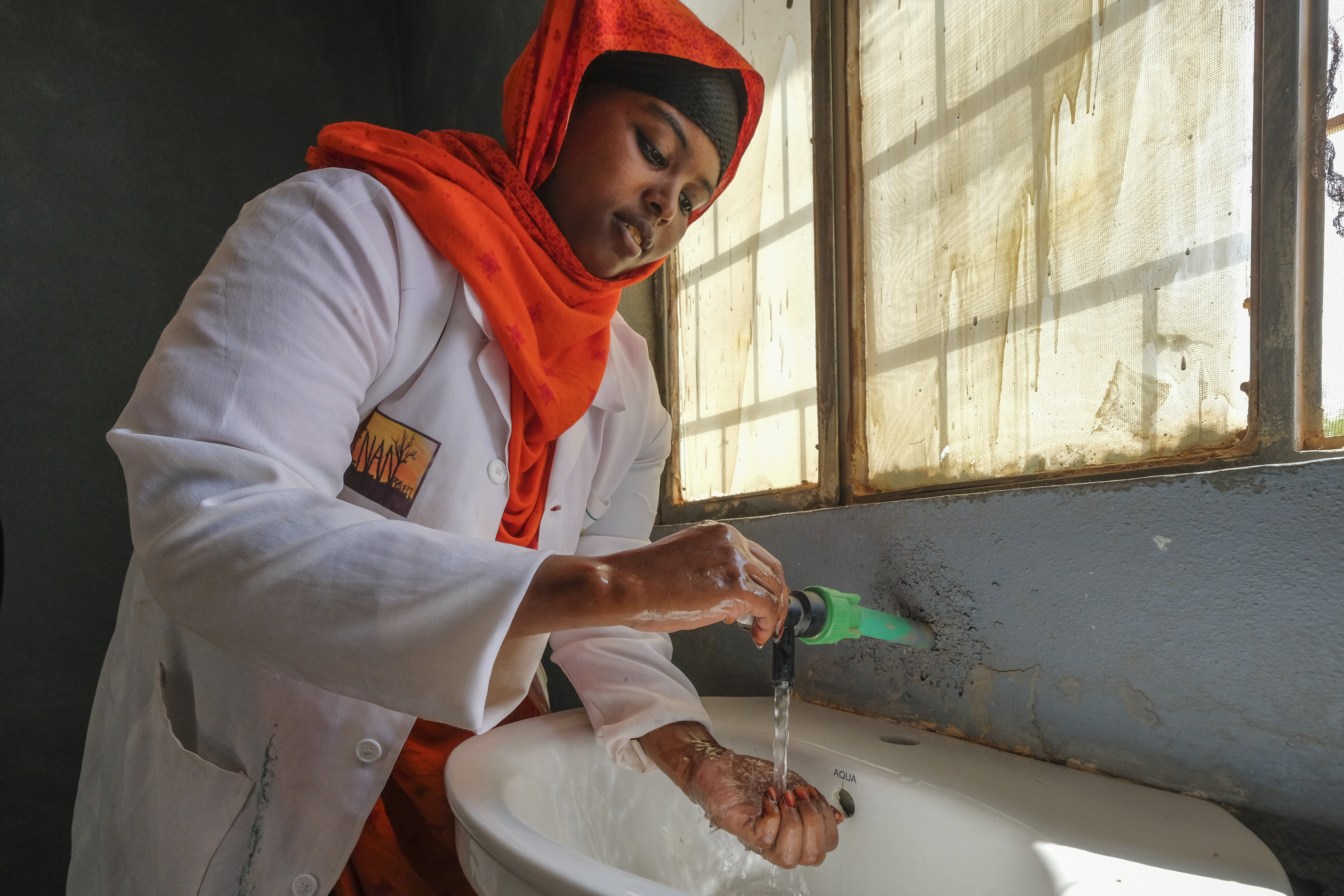During the acute drought arche noVa organised the supply of around 6000 affected people with drinking water by water trucking. But to face the water shortage on-site for a longer duration, our team began the expansion of storage basins and wells
Water basins inaugurated
One year after the project started the inhabitants of Kidunbur village in Woreda Goglo district invite to the inauguration of their new rain water collection store. The capacity of the stonewalled and covered basin amounts up to 800 cubic meters and so became the most precious building in the village. The happiness over the project can be read off the peoples’ faces.
Eight of those traditional storage systems, called birkaz, were built in the region by arche noVa in cooperation with our local partner organisation OWDA and equipped with hand pumps. They were finished on time before the rainy season began and proved themselves during the first days of rain in 2018.
In Kidunbur and other villages, WASH committees were founded and trained before the storages’ initial filling. The now organised members of the committee are responsible for operation and maintenance of the installations, as they have an existential interest in the birkaz to be working as long as possible. Because in the arid Somali region of Ethiopia, where large quantities of rain fall usually only twice a year, the storage basins do not only secure the population’s water supply but also the watering of the livestocks that guarantee the livelihood of the mostly nomadic living families.
Shallow well expanded
Camels and goats are standing at the well in Tayin, each and every day. 120 families are living around here, but the village secures the water supply of further hundreds of families who roam the region with their livestock. In the dry season they cover up to 40 kilometers to reach the well of Tayin. During the drought in 2017 this contact point was endangered too: the 80 year-old well threatened to collapse. arche noVa organised the new excavation and the deepening from 4 to 26 meters. The project team installed a pump and a deep tank providing a hygienically proper and plain water distribution. Six water taps and two troughs were hooked up. Since then, Tayin provides water all year round again. The same goes for the commune of Dhure where arche noVa has also expanded the village’s well.
Water for patients
Another important milestone in our emergency project in Eastern Africa is the equipment of the health center in Ethiopian Denan with a working water supply system. Therefore the present birkaz was refurbished, expanded and endowed with a “Skyhydrant” water reprocessing system. Additionally all sanitary facilities and washbasins, showers and the sewage system were rehabilitated and extended. Since our operation the center now has clean drinking water for patients and personnel and drastically improved hygiene conditions.
Step by step towards more health care
To improve the health situation and the hygienic conditions in the region even more, arche noVa arranged for new sanitary facilities at two schools and two health centers. Sex-separated and barrier-free latrine blocks were constructed.
All these construction projects become sustainable because of the spreading of knowledge about drinking water treatment, hygiene and diseases. In a number of villages we carried out awareness measures and cleared up about symptomatology, prevention, ways of disease transmission and treatment options concerning water-related diseases like diarrhea. Hygiene sessions took place that faced topics like water and food cleanliness, feces and waste disposal and the importance of latrines and hand washing. In the community of Dhure we had a tight cooperation with a local women association whose members visited a few families each to spread the knowledge.
How it goes on
Our work on-site is not finished yet. We will drive forward the construction of water supply systems, rain water collection tanks and sanitary facilities furthermore to bolster up the people in the Somali region. We want to put them into position to be able to face the chronic water shortage in the region themselves. The goal is to prevent such dramatic consequences of a returning extreme drought
At the moment our help also is urgently needed as the ongoing rain season has brought unusually heavy rainfall in parts of the region, which the totally dried out soil cannot cope with. So the rivers, where many people have been forced to move to during the last months of drought, have overflown their banks and sometimes even cut off complete communities from their surroundings.Initial measures were already carried out by arche noVa.














